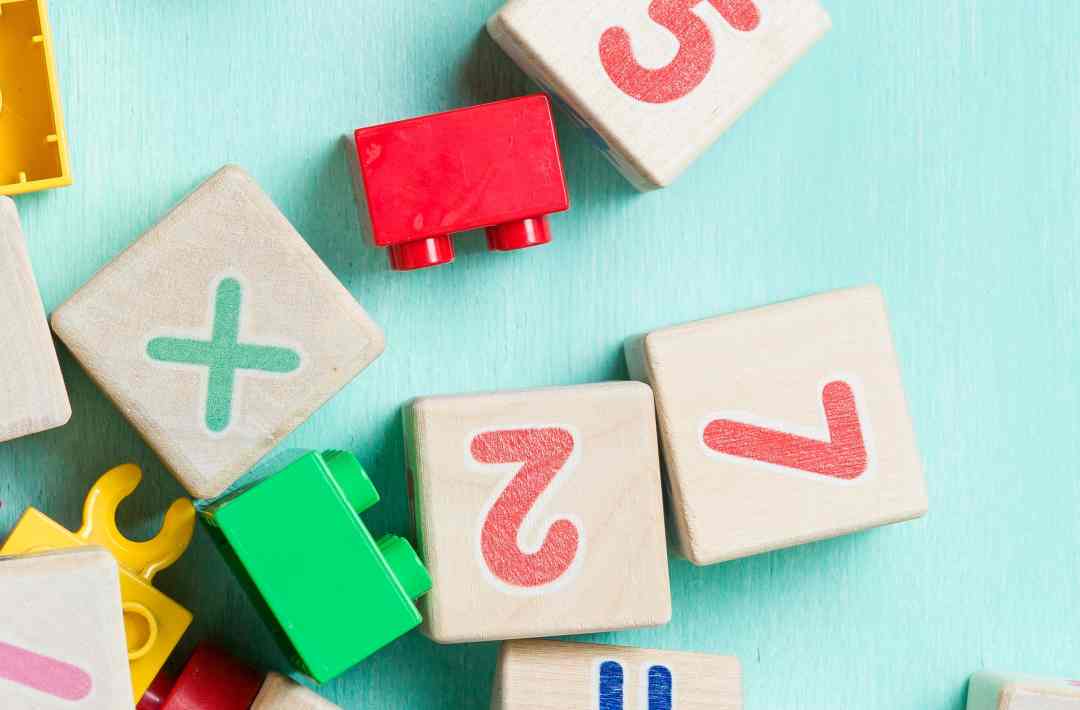Let’s face it: Raising kids is one of the toughest jobs out there—and child-rearing in the time of the new coronavirus disease, COVID-19, has made it exponentially more challenging. From juggling the demands of working (or not working) from home to school closures that are now extending through to the end of the school year in many places to no more in-person playdates, society’s new normal has been not only unsettling but downright unsustainable for many parents. Throw in worrying about your child’s psychological well-being, and your stress levels are no doubt through the roof.
Research from the University of Michigan conducted in the early stages of the pandemic reveals that conflict between parents and kids is on the rise, with more and more incidences of yelling as well as the use of harsh language. What’s more, according to the study, 15% of parents acknowledged that they have upped their use of discipline during this time.
If any of this sounds familiar, you’re not alone in your experience. Even some experts in this space aren’t having the easiest time navigating parenthood in the pandemic. “Although I am a school psychologist—I practiced in elementary, middle, and high schools before making the transition to academia—I am not an early-childhood educator or homeschool educator,” nationally certified school psychologist Erin A. Harper, Ph.D., NCSP, an assistant professor of school psychology at Texas A&M University-Commerce, author of the comedic book Dear Mom, You Don’t Get to Have Nice Things, and mother to a four-year-old son, tells SELF. “These educators have special skill sets, so I’m setting reasonable expectations for myself and doing the best I can.”
I spoke with Harper via email about how parents can try to support their children’s emotional and mental health right now, why parents need to extend themselves grace as they navigate this new landscape, and how to best thrive during this time. Don’t worry—according to Harper, we are all learning as we go.
SELF: This pandemic has put us all in a precarious position, and we have all been affected in some way. When it comes to kids, what might they be feeling at this time?
E.H.: Children and youth may be experiencing a number of feelings. The reactions of the adults and others with whom they interact will impact what they pick up on and feel. It’s natural (and okay) for adults to be anxious and worried in these uncertain and stressful times. Understanding that the children and youth in our lives, regardless of age, will pick up on our feelings, we will want to try our best to put coping mechanisms—connecting with friends and family members who are supportive, engaging in physical activity/exercise, getting adequate sleep, mindfulness activities such as meditation and journaling, et cetera—in place to manage our emotions so that when we interact with our children, we can model a sense of calm, listen carefully to what they have to say, and provide thoughtful responses.
Most Popular
- 5 Less Obvious Signs of Seasonal Depression You Should Definitely Pay Attention To
By Maggie O’Neill
- How Gross Is It to Wear New Clothes Without Washing Them First?
By Julia Ries
- Paxlovid Is Super Promising. Why Aren’t More People Getting It?
By Maggie O’Neill
For me, creating, especially comedy, brings me joy and helps me to cope with stress—and hopefully brings joy to others. When I’m not doing work stuff, I’m in a sketch-comedy troupe called FCC Presents in Dallas, and I write comedic books for parents to help them cope with parenthood in a fun and funny way. I’m not able to do comedy at the Dallas Comedy House theater where I usually perform, because of closures, so making home learning videos with my son has been a creative outlet for me.
What is the best way to talk to kids of various ages about what’s going on?
Preschoolers will have a limited understanding of what’s going on, but they may recognize changes in their daily routine and express concern. For example, since school has been closed, my four-year-old has been asking if he can go to school to see his friends. I explain to him that we can’t go to school or other places right now because many people outside aren’t feeling well, so it’s safer for us to stay home while people get well enough for us to go out again. He doesn’t fully grasp this explanation yet, but I tell him anyway. I also let him know that we can talk to friends and family via video chat. I then turn his attention to a new subject because distraction works well with children this age.
When it comes to elementary school children, your best bet is to keep the language simple, balancing facts about the pandemic with reassurances that adults are doing what they can to help keep them safe.
Middle schoolers are likely to be more vocal in their quest to understand what is happening. Your goal: Ensure they understand the difference between the reality of what is going on and those things that are simply not true. Since junior high and high school students are typically able to understand and discuss more details about these types of issues, tell them the truth, provide up-to-date facts, and direct them to credible resources. Doing so offers them a sense of control over one aspect in their life during this time.
What is the best way to support kids emotionally right now? Do they need structure or more flexibility than usual? How do you weigh creating structure against everything else you have going on?
Children and their caregivers definitely need lots of flexibility right now, but structure is helpful for promoting a sense of calm. A daily schedule is one example. If you create a schedule and following it feels stressful, then the schedule probably needs to be reevaluated and adjusted.
When I found out schools would be closed, I made a schedule for my four-year-old (and myself) right away. I try to keep roughly the same lunchtime and nap time that he has at day care. This is what I do during holiday breaks as well. I usually work or take quiet time for myself during his nap time. At school, Friday is pizza day, so I do the same at home. I’ve also allowed him to choose whether he wants to sleep on the nap mat that he takes to day care versus his bed during nap time. Doing little things like this helps to create a sense of normalcy.
Most Popular
- 5 Less Obvious Signs of Seasonal Depression You Should Definitely Pay Attention To
By Maggie O’Neill
- How Gross Is It to Wear New Clothes Without Washing Them First?
By Julia Ries
- Paxlovid Is Super Promising. Why Aren’t More People Getting It?
By Maggie O’Neill
Since creating the schedule several weeks ago, I’ve made several adjustments to make the day flow better for us and as fun as possible. Some of these adjustments have been based on his interests/responses to the activities. I’ve also been making an effort to make weekends feel different than the weekdays, but we do try to keep the same sleep and eating schedules.
What if a parent just can’t juggle it all: work, homeschooling, sanity?
If parents can’t juggle it all, it’s okay! We must be gentle with ourselves and give ourselves grace. Trying to homeschool one or more children is a huge undertaking for parents, and many of us are not trained educators. If children are stressed and worried, their learning may be impacted negatively anyway, so we need to focus on helping them feel safe and loved. Encourage children to practice self-care and listen to their feedback about what they want their days to be like. Work together to plan their days.
If you feel like everything in your household has gone off the rails, is there anything you can do?
The first thing parents can do is not feel bad. We are navigating a pandemic! If everything has gone “off the rails,” try to get back on when you can and however you can, even if it takes a while. For example, if you find yourself giving your child the iPad more often so that you can attend Zoom meetings for work or tend to other responsibilities or you just need a break for self-care, one option is to make sure the iPad content is high-quality educational content.
What are signs parents should look out for that kids may be scared or are having a hard time processing?
Generally, children in different age ranges will experience different reactions. Regardless of age, parents will want to look for behaviors that are outside of the norm for their child.
When feeling stressed, preschoolers may display regressive behaviors such as being overly clingy and having more toileting accidents or tantrums than usual. Changes in eating and sleeping habits are also common signs of stress in children this age.
Those in elementary school may present changes in mood such as increased irritability, sadness, worry, and difficulty controlling emotions. Like younger children, they may be clingier than usual and experience eating and sleeping changes. Their concentration levels may also take a hit.
While stressed adolescents may also experience poor concentration, changes in mood, and disruptions in sleeping and eating patterns, other signs to be on the lookout for include acting out and physical health complaints. Again, these are just some of the signs that children may begin to exhibit.
What are some resources for overwhelmed parents right now? Especially if they have children with special needs who usually get a lot of help and fulfillment from school?
I would look into virtual support groups such as Facebook groups for parents dealing with similar issues. These may be especially helpful for coping and finding resources in your area. And, if possible, stay connected to your children’s schools. Parents can also take advantage of companies and online platforms currently offering free learning opportunities—PBS LearningMedia is one.
Most Popular
- 5 Less Obvious Signs of Seasonal Depression You Should Definitely Pay Attention To
By Maggie O’Neill
- How Gross Is It to Wear New Clothes Without Washing Them First?
By Julia Ries
- Paxlovid Is Super Promising. Why Aren’t More People Getting It?
By Maggie O’Neill
This time of physical/social distancing may be especially tough for children with disabilities and their parents, especially children and parents who rely on services that can’t be provided or are difficult to provide through online platforms. Special educators and other care providers such as psychologists, occupational therapists, physical therapists, and behavior analysts, to name a few, have highly specialized skill sets that parents rely on to help meet their children’s needs. Many of the schools and community-based organizations that employ these professionals are still trying to figure out how to provide these services during a pandemic. Schools and community-based organizations serving children with disabilities should be keeping in contact with the families they serve, realizing that the parents who rely on these services are likely overwhelmed and need help.
If parents are able to, they should contact school and community-based service providers to see what (and how) services are available. Those conversations may provide guidance on how to access the therapies, supplies, et cetera that children rely on. For children with medical or other therapeutic needs, contacting these providers may also provide insight on whether to stay at home or go to a facility where these services are provided.
How do you think this experience could affect children long-term?
This is a complex question. One reason it’s hard to answer is because we do not know when social/physical distancing will be over. We do not know for how long or how many times we will be required to social/physical distance over the next few months or year(s).
While parents certainly should not minimize the importance of their children missing milestones such as prom or graduation, you may find comfort in knowing that the disruption of these milestones is unlikely to cause serious long-term negative effects in most children and adolescents.
What we do know is some children, especially those belonging to vulnerable populations, have already had experiences related to COVID-19 that may affect them long-term, such as the death of a parent or other loved one. In the United States, the odds of having a family member die of COVID-19 are higher if you are a child in an African American or Latinx household, since African American and Latinx individuals are dying from the disease at disproportionately higher rates than others. It is important to note that these racial health disparities are due to America’s legacy of structural racism, which has restricted African American and Latinx communities’ equitable access to a range of support systems that would decrease the odds of experiencing negative outcomes during a pandemic.
Putting support in place to help children and youth thrive in the face of adversity and build resilience will be especially important as we navigate our new “normal.” Children and youth will need adults—at home, at school, and in the community—to provide protective experiences for them, such as mentoring and culturally responsive youth development groups that will help them to build upon their existing strengths and healthy coping skills. Efforts to provide this kind of support in under-resourced communities where the long-term effects of COVID-19 will disproportionately impact children and families may be more important than ever before.


